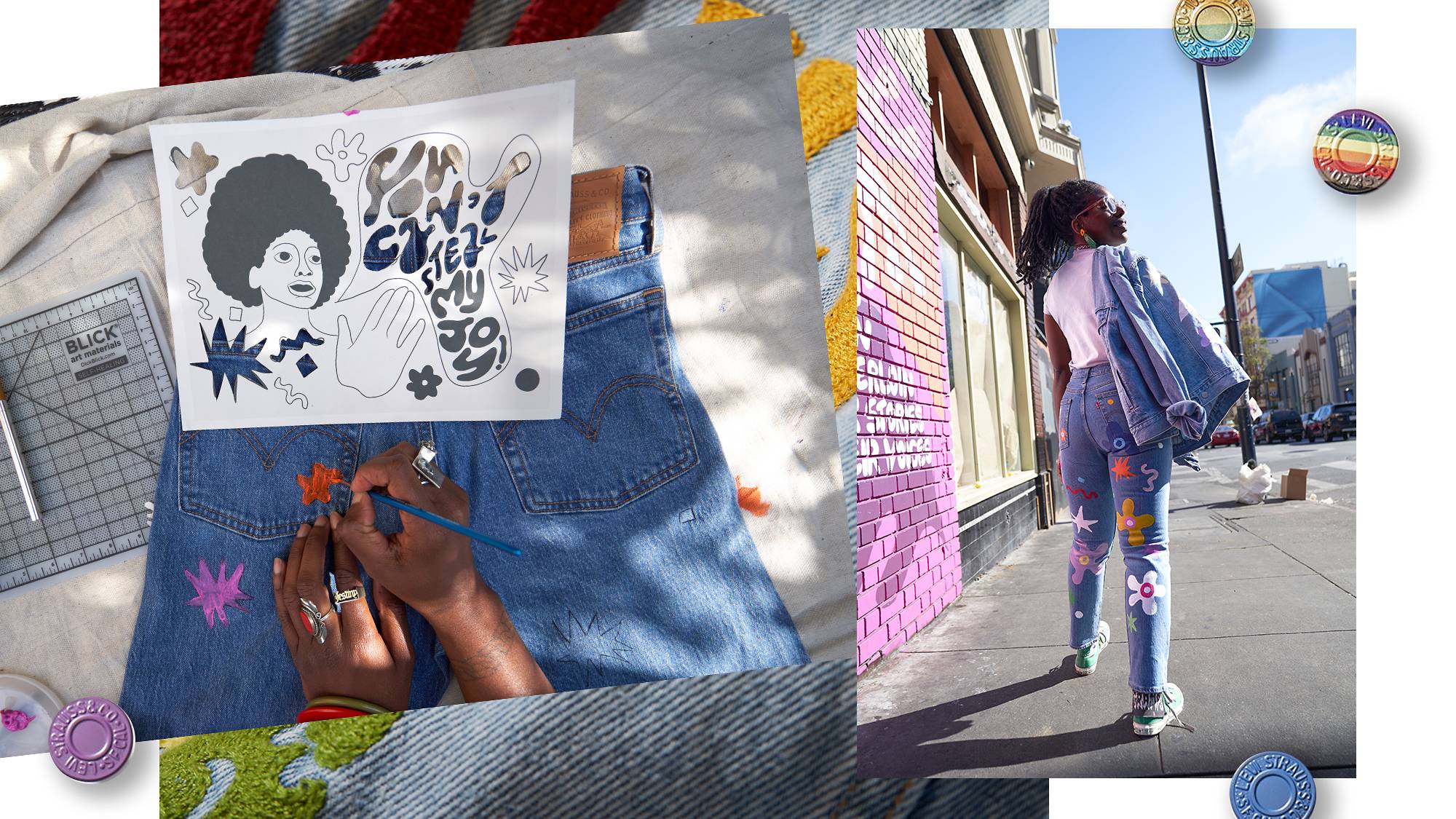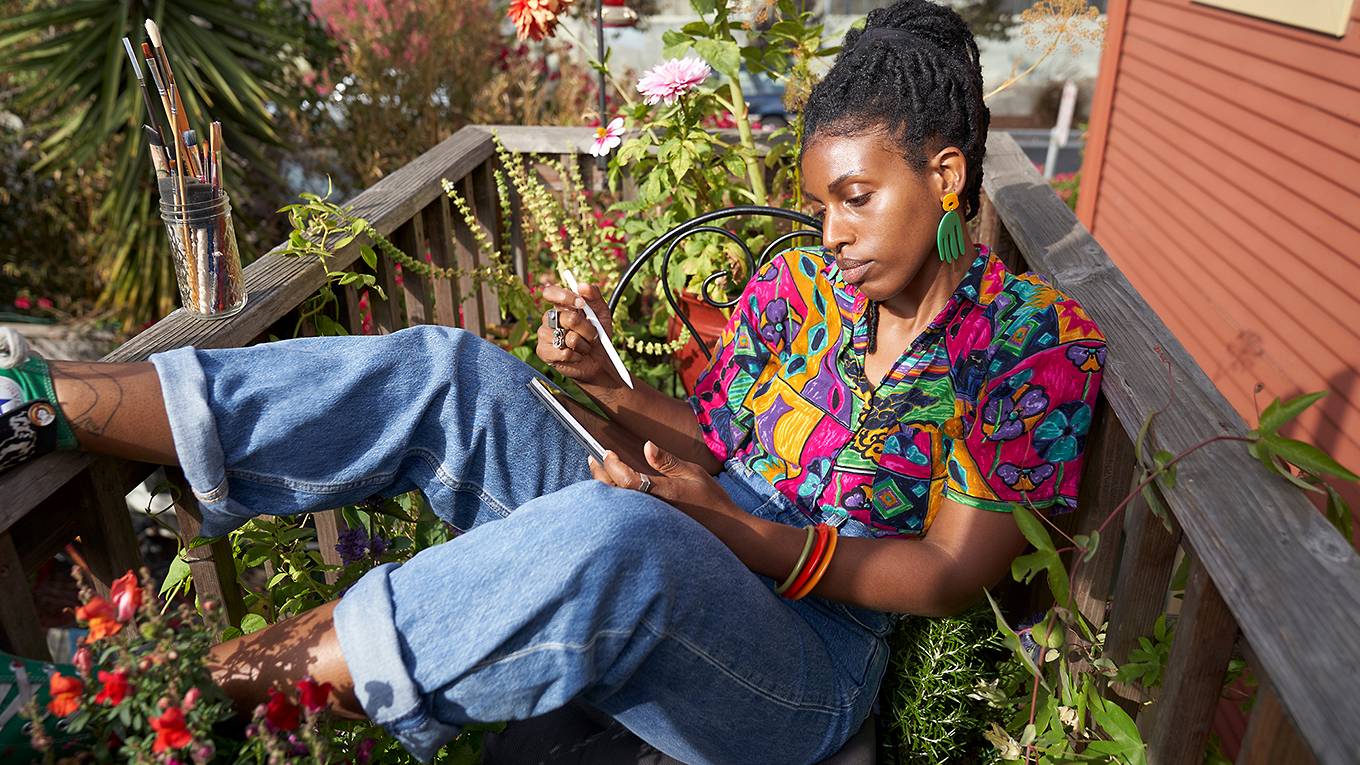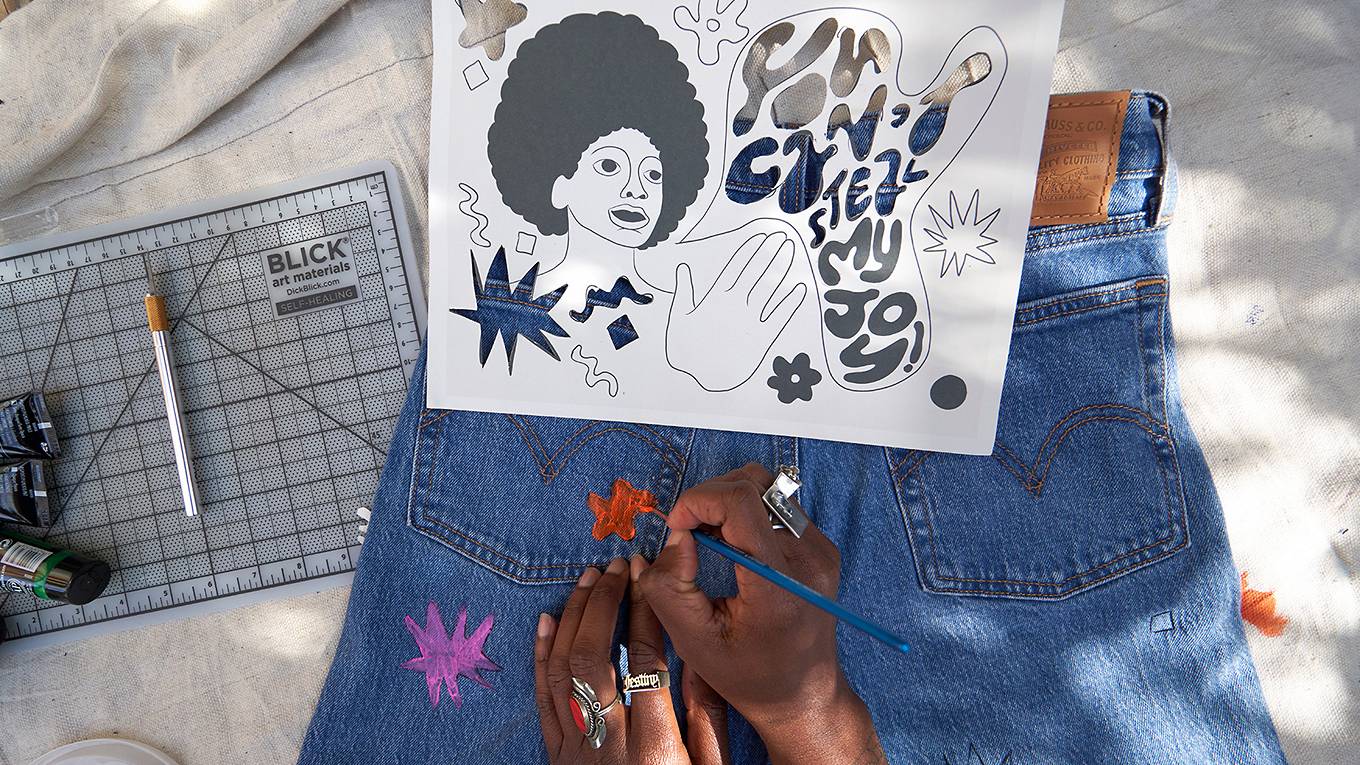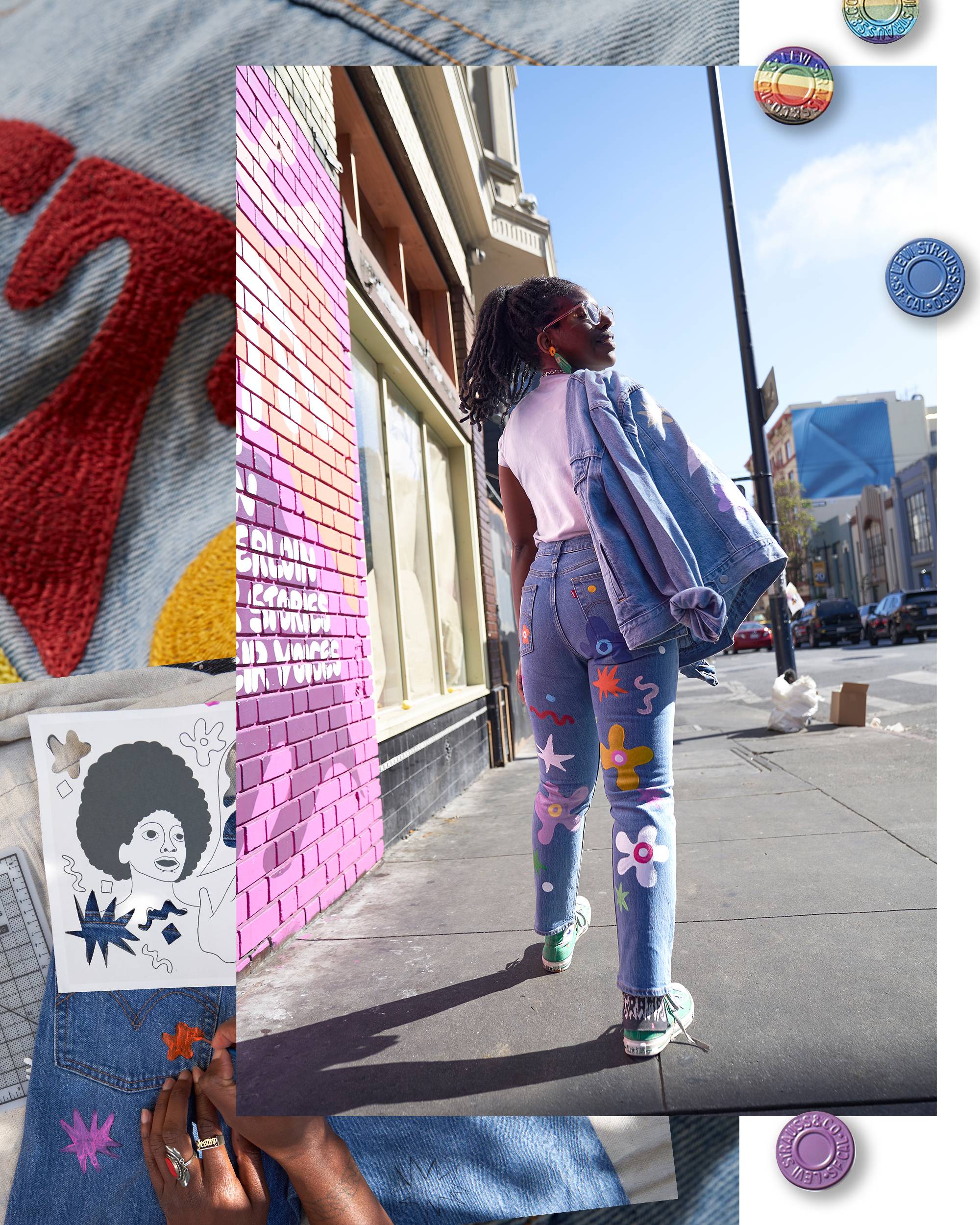
Pronouns: She/Her
Activism doesn’t just look like leading a protest. It’s serving your community through social work. Or that low-fi video that makes you feel a little less alone in the world. It’s multimedia artist Corinne Smith, also known fondly by the moniker Critty Smitty. Alchemizing paint into moving explorations of joy in the midst of grief and loss, Corinne is a testament to the power of art as activism.
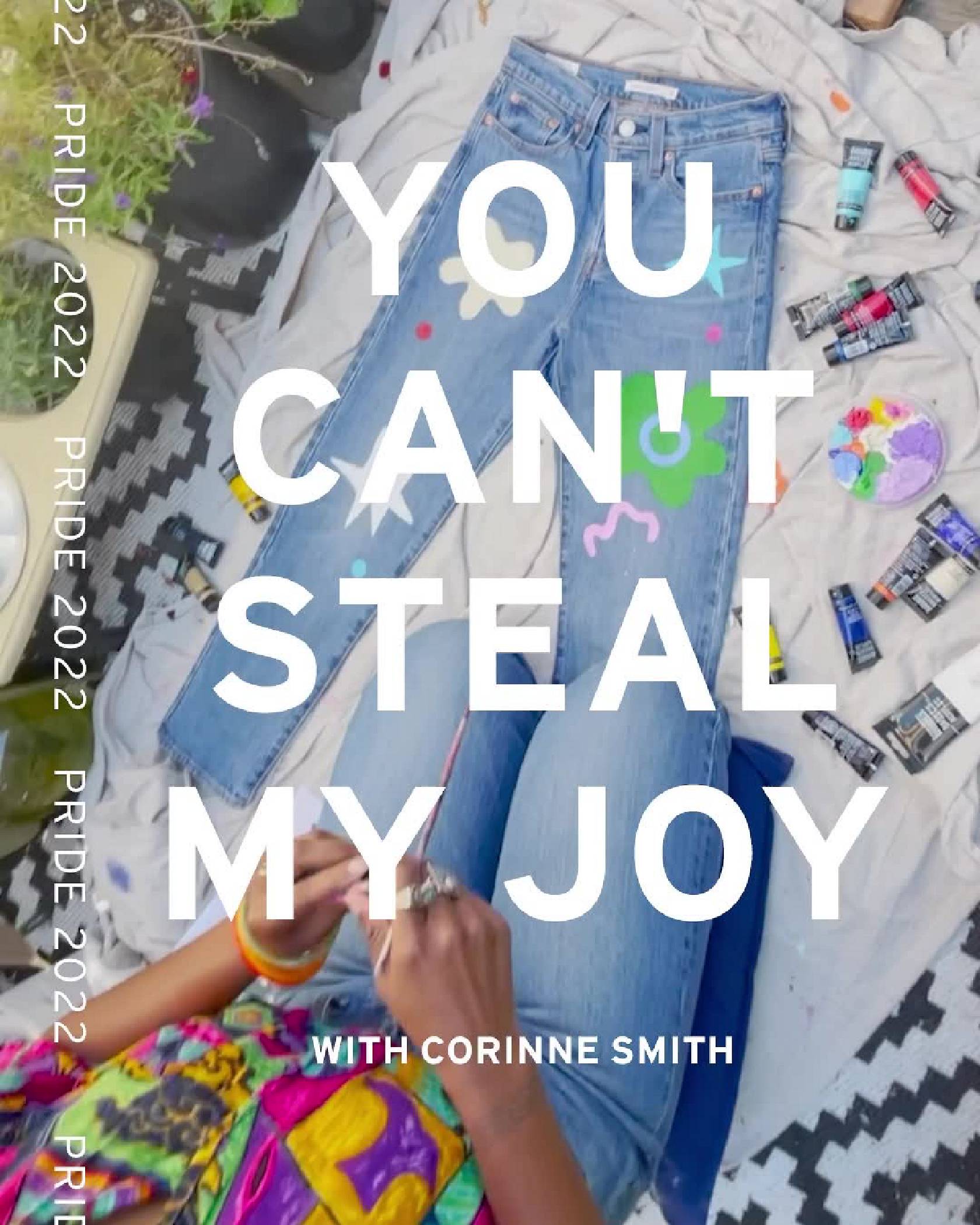
Let’s start with your career as an artist.
I've been making art for as long as I can remember. I had a lot of social anxiety when I was younger and expressed my large imagination through drawing. After having such a rich, positive association with art, I had a horrible experience in college. It was there that I realized that the greater world’s outlook of art was more cutthroat, full of non-constructive feedback and critiques. This experience led me to not practice art for a while. Art had always been a safe space and emotional outlet for me, but all it brought then were those feelings of pain that I’d experienced while in school working with teachers who mostly happened to be white and didn't really necessarily understand other folks' backgrounds. The interesting thing is that I never felt isolated as far as my queer identity is concerned, but I did as far as being a woman and being a Black woman on top of that. And so intersectionality definitely plays a role in the art that I create now and how I stand up for other folks in these oppressive systems.
At what point did your art become activism?
The big spark was last year, after George Floyd's murder and the protests that were igniting—both around the world and here in Oakland. Lots of buildings were being boarded up, and there was a big call for art as commentary on what was happening and it being such a heavy, devastating time. Vaccines hadn't been rolled out yet, and I felt very isolated. Apart from going to drive protests, I didn't really know how to participate in a way that felt safe, so I applied to a call for murals in the city. My first mural was a combination of gestural, joyful colors and featured a portrait of myself looking at Angela Davis, a strong figure from the Black Panther Party, a strong, queer woman from Oakland continuing the work of those who’ve paved the way for us.
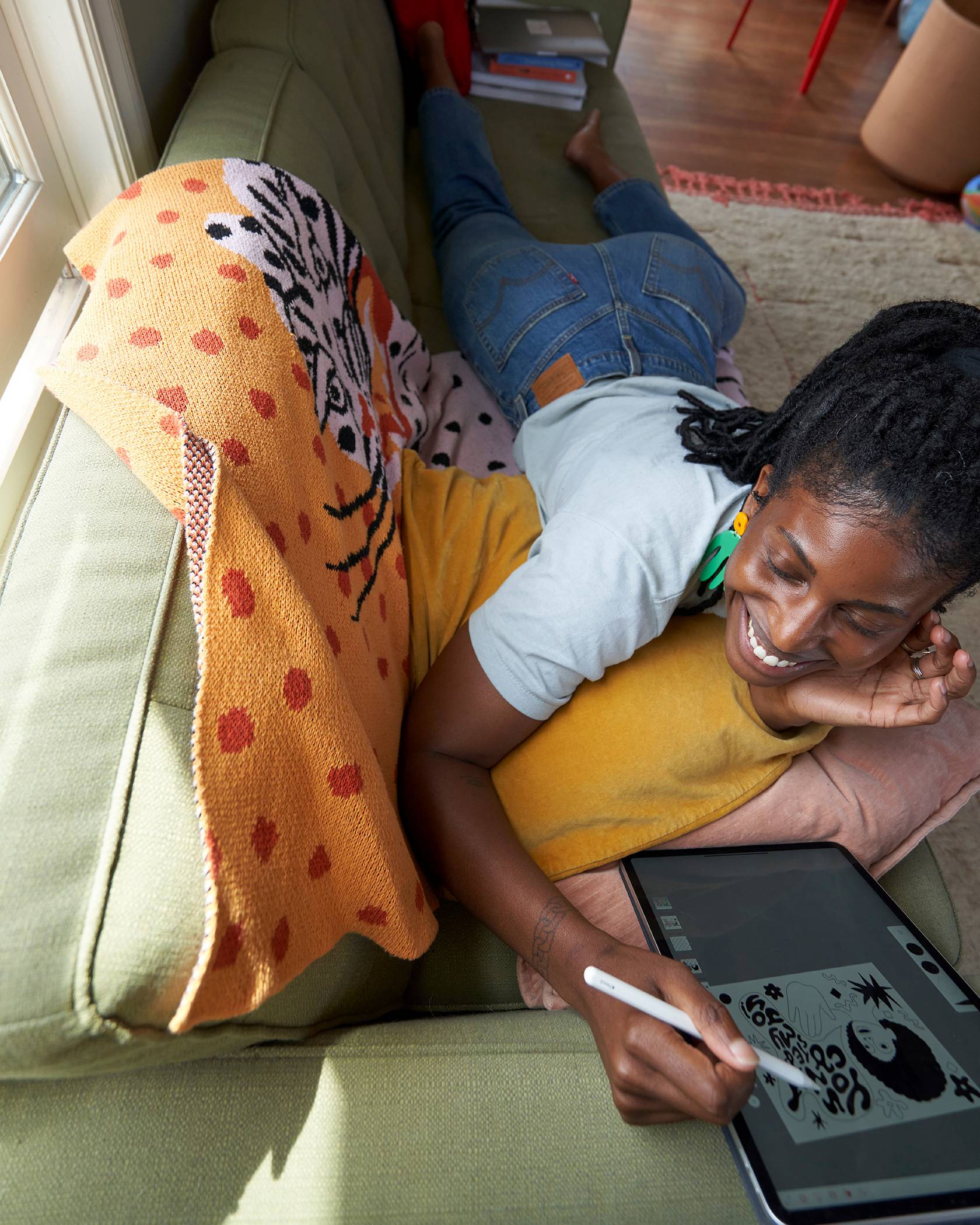
After being in my tiny house and not really socializing with people, it brought me so much joy to do this work Oakland. Working on that piece and having people come up and talk to me about the artwork that I'm doing or the artwork that they're doing makes me feel connected to the community in a tangible, joyful way. Now, the way I stand up always comes from a lens of positivity, because I know how isolating it can be to feel alone, to feel like everything has to be a painful fight. That work sparked art as activism for me, and showed me how radical joy is its own form of activism.
Who has paved the way for you to be here today?
When I came out, which was later in life, I discovered that my grandfather—my person growing up—was queer. We've always been kismet. My grandparents moved to Detroit during the depression and my aunts and uncles were born in the forties and fifties, which was a different time. I think his queerness was a point of contention between my mom, her sisters and my grandma.
Everything my grandfather did trying to live in his truth while caring for his family has led me to be here today. He quite literally helped pave the way for me. He helped bring my mother into this world, without whom I would never be here. He allowed me a life in this time, when I can be more safely out than he was and live a full life in which I can opt to divest from the traditional and expected and choose my own heartpath.

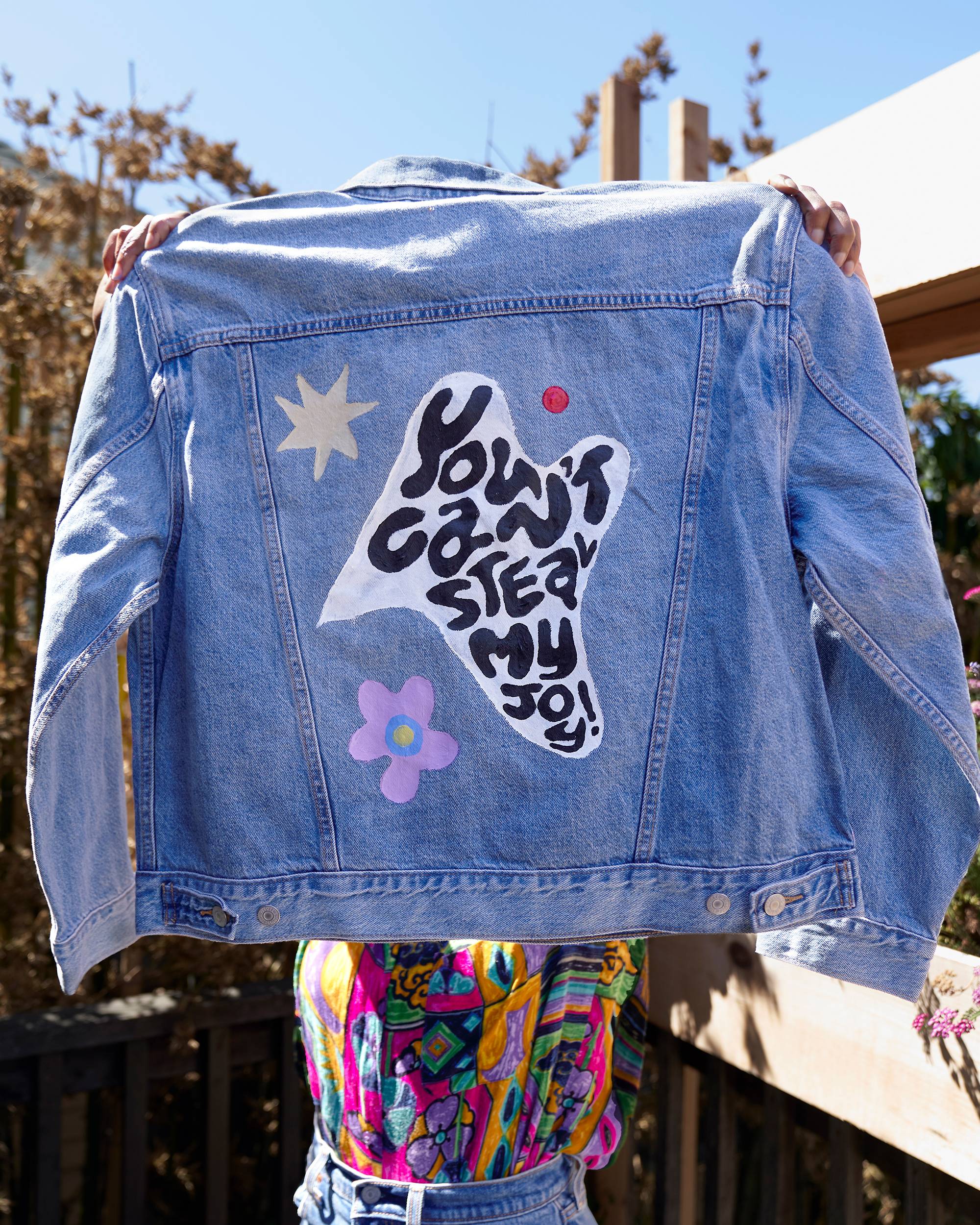
How does your intersection of identities inform how you move through the world?
It informs everything. I think one of my greatest strengths is empathy. And a lot of that comes from how I grew up, from navigating life as a cis woman. It's come from navigating my life as a Black person. It's come from navigating my life as a queer person. When I came out to my family, they told me they loved me unconditionally, which was the best thing I could ever hope for. The first thing my mom said was something along the lines of, “You know, you're already a Black woman.” She didn’t say it in a disappointed way, but she was pointing out that this would add to all the things I already have stacked against me.
This intersection of identities has shaped me into someone who’s always looking out for people. It’s shaped me into someone who always wants to sit with people, even if they don't have anything to say. Something I've learned is that a lot of people don't always feel safe expressing their needs and concerns, because the environment they've been in hasn’t fostered that. I think my experiences shaped me into someone who is generally willing to give most people the benefit of the doubt and the space to learn. I give myself space to learn too, because I definitely don't always get it right.
What acts—large or small—do you make in your everyday life to insight change?
The little things are so important. I know there’s this immense pressure to make the most grandiose gesture, but do what you can. I can't show up in big ways for everyone, but I can show up in a little way for everyone. That might look like donating to mutual aid or making a meal for someone. It could be buying extra groceries and making cookies to bring to a town fridge. Maybe someone's having difficulty making rent, maybe someone's loved one is ill or has just passed. Maybe I'm feeling called to make a flower essence for someone who's dealing with something deep and emotionally taxing, maybe it’s sending someone a card. I'm also a patron of quite a few artists, writers and activists on Patreon.
A lot of people need more help than they are willing to admit. So I think one of the biggest things you can do is just checking in. Sometimes all you need to do is ask someone what it is that they need. And that's it. They might not need anything, but going out of your way to check in with someone can make a big difference. Injecting positivity out into the world is a small thing that you can do.
You designed a moving piece that reads, “YOU CAN’T STEAL MY JOY.” What was the inspiration behind the powerful phrase at the center of this work?
Joy is such a radical act. My partner shared something she was reading that referred to joy as a muscle you have to actively use. Getting back into art while at one of the most soul-crushing jobs I’ve ever worked is what brought joy back to me. I was working 60 hours a week, in a role that brought me no satisfaction, at a workplace rampant with racism and sexism. I realized that nobody is going to be able to provide me with joy but myself. And nobody can take joy away from me.
And so I started cultivating that joy. I started taking more walks, spending more time in nature and more watercoloring—all of which made me feel so much better. I need to practice the things that bring me joy, otherwise I'll be zapped of energy. That’s how I came up with that phrase. You can take a lot from me, but not my joy.
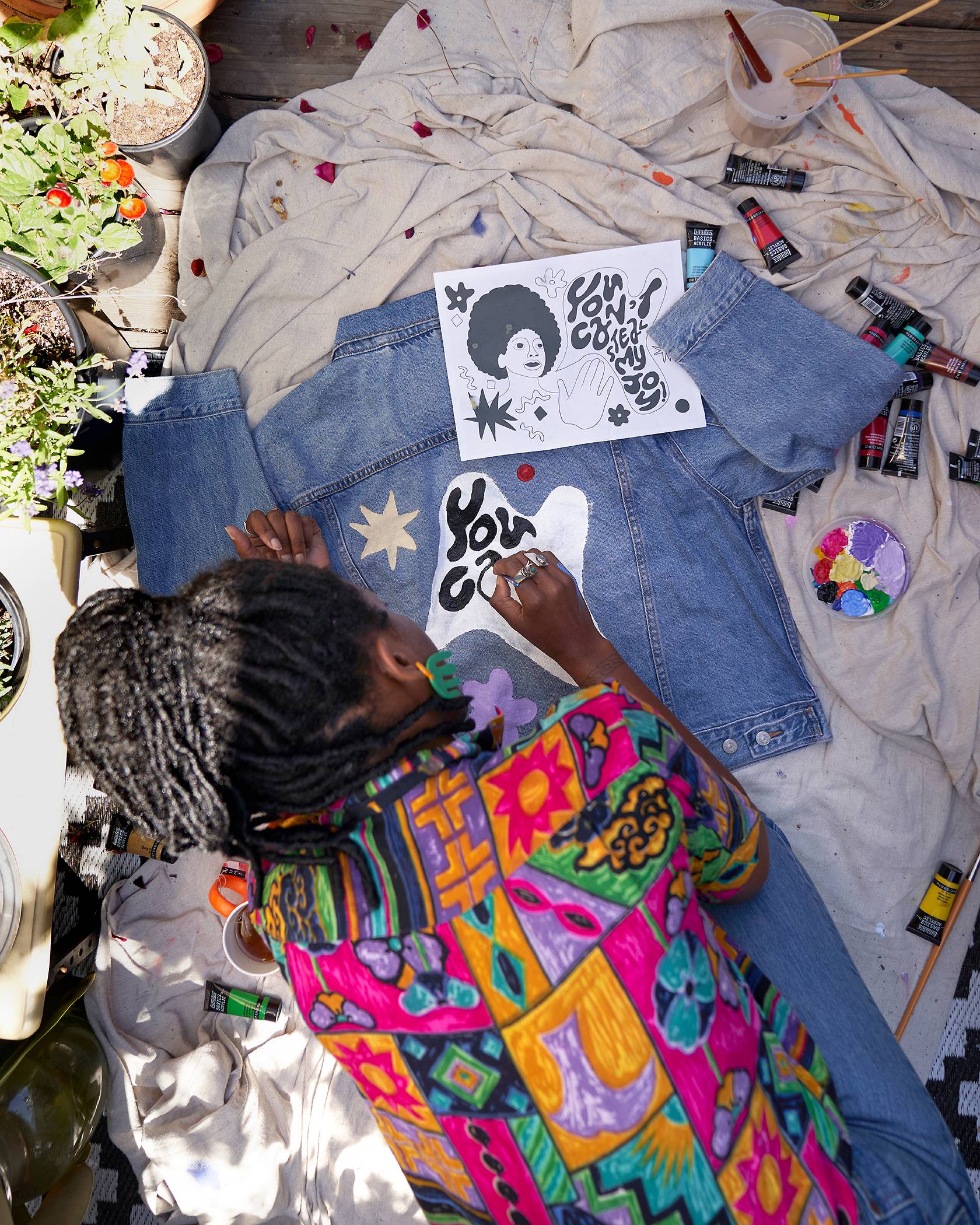
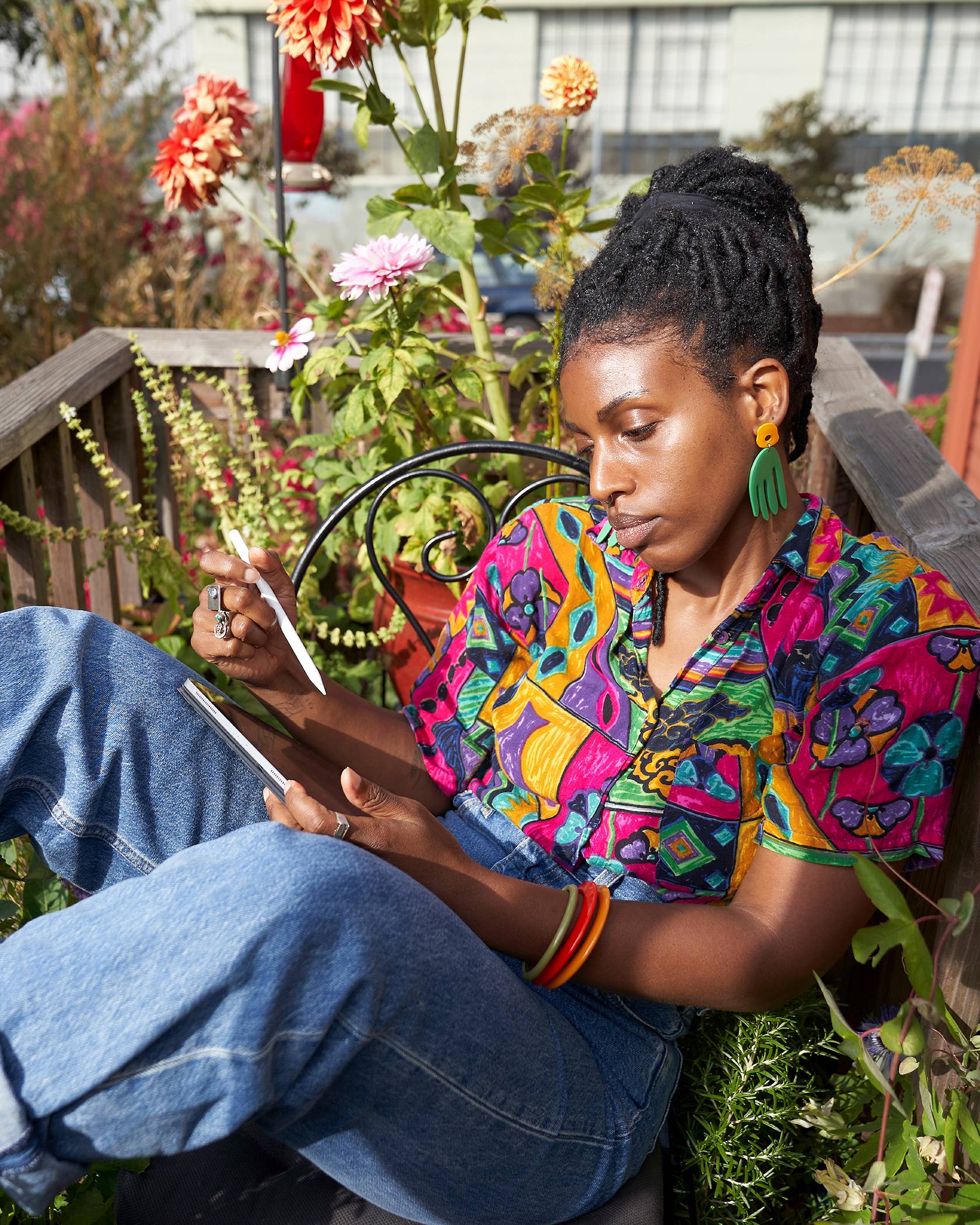
In this world that asks for queer folks to shrink—especially those who experience multiple forms of oppression—what gives you the audacity to enact change?
I think a pivotal moment was when I left one of the most toxic jobs I've ever had in February of this year to do my own thing. While there was a lot that I can push to advocate for teams underneath me and the people around me, I was still answering to someone else. There was only so much that I could do. I felt unsafe and couldn't help control the safety bubble for those I cared about. I had to say something about it—and so I did. I held them accountable. I say things pretty directly and give people space to learn and grow.
I HOPE TO SEE A WORLD WHERE PEOPLE CAN NAVIGATE LIFE AS THEIR FULL SELVES, FEELING SAFE AND EMBODIED, A WORLD IN WHICH THIS WOULDN'T EVEN HAVE TO BE A DISCUSSION.
What are your wildest dreams for the queer community?
My wildest dream is not anything wild, it’s just for people to exist freely. I want to walk down the street without someone saying something to me. I want to not have someone get up and move when I sit next to them on a bus. I want to be able to say something and not have someone comment on or be surprised that I am educated and speak clearly. I want people to be able to live their lives unbothered in a real way, not a nice-to-your-face or nice-until-you-infringe-on-my-privilege kind of way. I hope to see a world where people can navigate life as their full selves, feeling safe and embodied, a world in which this wouldn't even have to be a discussion.
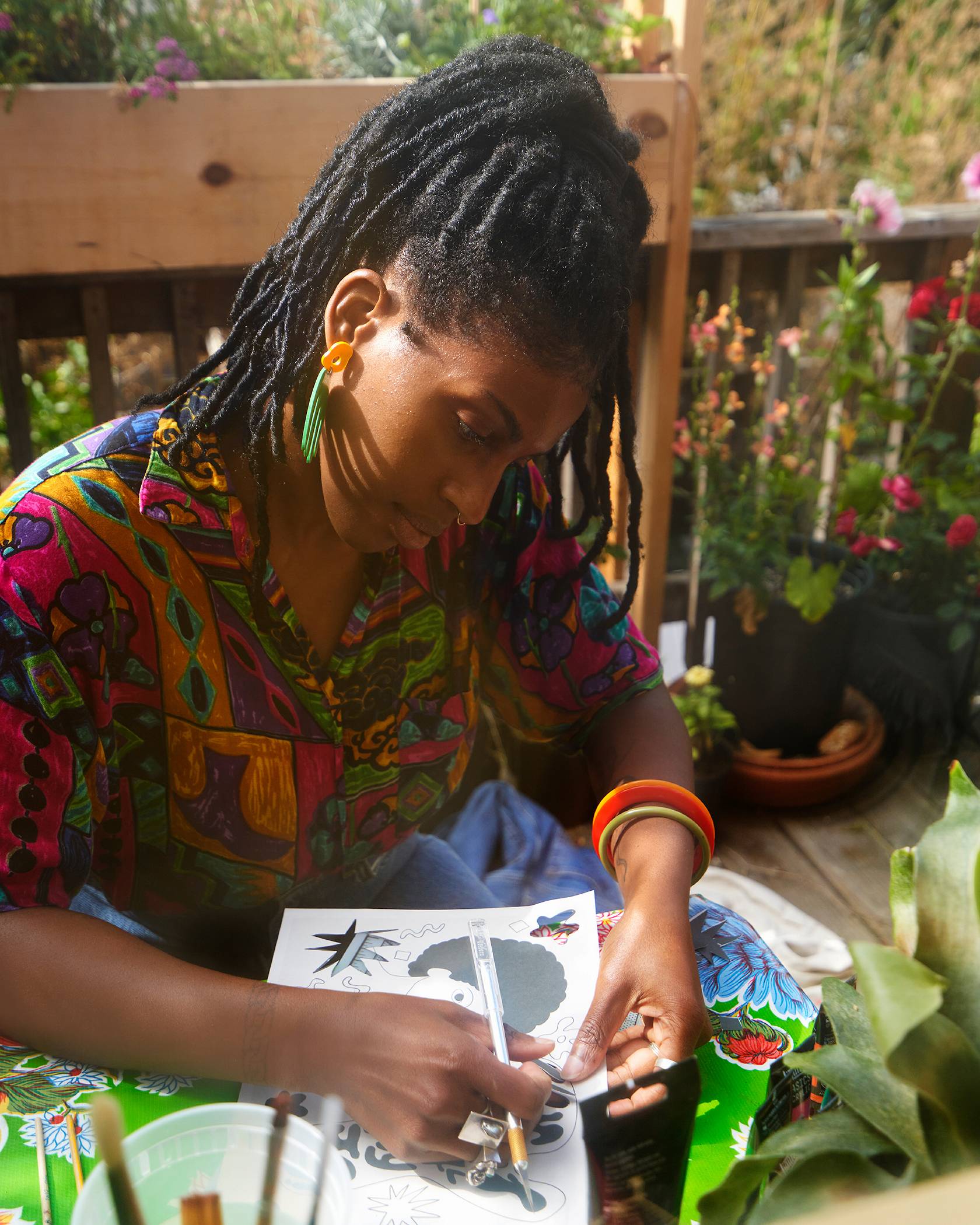
What are some conversations you would like to hear more of as we’re working towards queer liberation?
Kids are the future. I think it’s important to have conversations with younger generations about what it means to be queer, how we treat one another and what it means to have guardians who are queer. I want to hear more conversations around the fact that we are all different and how we’re different and what is and isn’t appropriate… something that’s always evolving! When I was in grade school, the terminology was very different; we didn't have terms for so many identities. It was so powerful to finally meet someone who identified pansexual—it’s beautiful to see yourself in a word. I didn't see that as a kid—you were either gay or straight. You couldn’t be bisexual. That wasn’t a real thing. There were all these parameters. I think it’s important to be critical of what those parameters are, why they're there and how and why that does not suffice, because we’re all different people. That needs to be taught at a young age.
And on that note, what legacy would you like to leave behind?
At some point, I would love to have a kid. Or kids, who knows? I would love for them to not have to grow up the way that I did. I had a lot of privileges of my own growing up, but there are still things that I always—and will always—have to navigate. I would love a legacy of people knowing that they can find their own worth and autonomy outside of the views of others and that when something feels wrong, it probably is. I’d like to live an embodied, purposeful life. I would love for people to feel empowered, embodied and joyful. I want people to know that you are not wrong just because you may make someone else uncomfortable.
Lastly, there will be a lot out of your control. There will be a lot that will make you sad. I don't wish anyone sadness, but it will come. I hope you learn that leaning into it is just as important as leaning into your joy, because the sadness can help inform the joy.
You can’t steal Corinne’s joy—but you can find your own.
If you’re as moved by Corinne’s art as we are, download it. Set it as your desktop background. Tape it to your dorm room door. Cut out the stencil and add it to your 501®s. Dye it on (bleach works, too). Just make it yours.
Rather leave it to the pros (a.k.a. us)? swing by your local Levi’s® Tailor Shop, and we’ll work our magic.
This interview has been edited for length and clarity.
